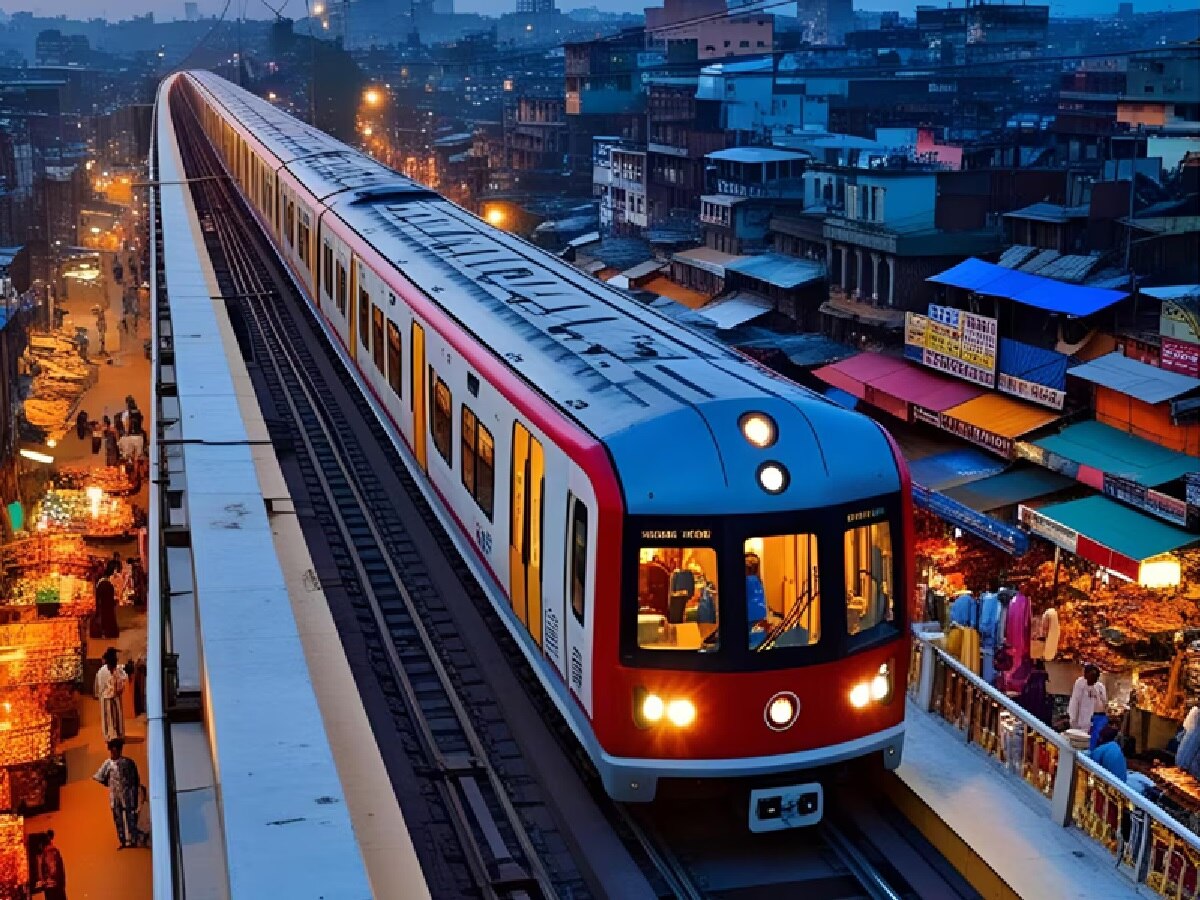Lucknow Metro: A major and modern change is going to happen in the operation of the metro train in Lucknow, the capital of Uttar Pradesh. When a metro train starts operating between Basant Kunj from the busy Charbagh area of the capital, there will be no hassle of electric wires (overhead electric wire) hanging above. Yes, you heard right! That is, the metro train will run on the tracks without electric wires. On the lines of Delhi Metro, Lucknow Metro Railway Administration is also going to use ‘Third Rail System’ on the new route from Charbagh to Basant Kunj. One of the major reasons to adopt this new technology is to avoid problems caused by kites. In place of overhead electric line, a third rail system will now be replaced, which will allow the metro to operate and facilitate.
How will electricity supply from steel line?
Three coach metro trains will be run on this new route. These trains will be done with power supply tracks or through a special steel line (conductor rail) laid in the middle. This technique is not new; Earlier, successful operation of metro in Kanpur and Agra is being done through this system. In view of the success there, this technology is now being implemented in Lucknow. It is expected that this will not cause any obstruction in the operation of the metro and will get better experience to the passengers.
Why is the third rail system being adopted on the new route?
Let us tell you that in the first phase of Lucknow Metro, four coach metro trains are being run from Munshipulia to the airport. There are four underground metro stations on this existing route. At the same time, there are plans to build 5 underground stations on the upcoming East-West Corridor (Charbagh to Basant Kunj). For this reason, three coach metro trains will be run on the new route, which are suitable for this system.
Currently, overhead electric line (OHE) is used on elevated routes from Munshipulia to the airport. Due to this OHE line, often the moths or threads of kites are stuck in the operation of the metro, especially in the areas of old Lucknow where kite is enough. The main objective of the metro railway administration is to remove this problem. To avoid the obstacles caused by kites, a track with a third rail system will be laid for power supply on the new route.
This system has already been successful in Agra and Kanpur
Prior to Lucknow, the third rail system has been successfully used and operated in Agra and Kanpur Metro, and this technology has also been quite successful there. Metro trains in these two cities are being run by third rail system, and their performance has been good there. Inspired by these successes, now the preparation to implement this modern system on the East-West Corridor in Lucknow is also in full swing.
After all, how does this third rail system work?
Third rail system is an advanced technology that supply electricity to metro or rapid transit trains (high -speed urban trains). A special type of steel line is laid in it, which either moves along the tracks or between the two tracks. This steel line is also called ‘Conductor Rail’. Below the train is a special type of tool (called ‘Collector Shoo’), which continues to contact with this conductor rail and provides electricity to the motors of the train, causing the train to run. The best thing is that like overhead electric wire, the third rail system is very low in technical disturbances or obstacles from external things (eg Manjha), which makes the metro operating more reliable and safe.
